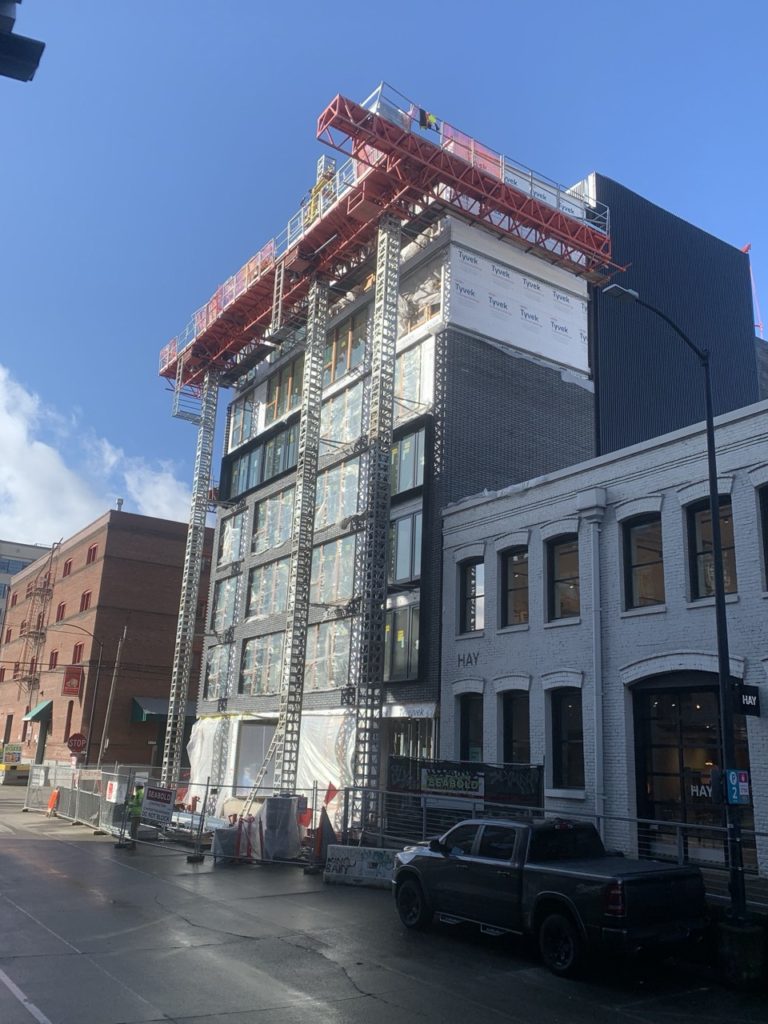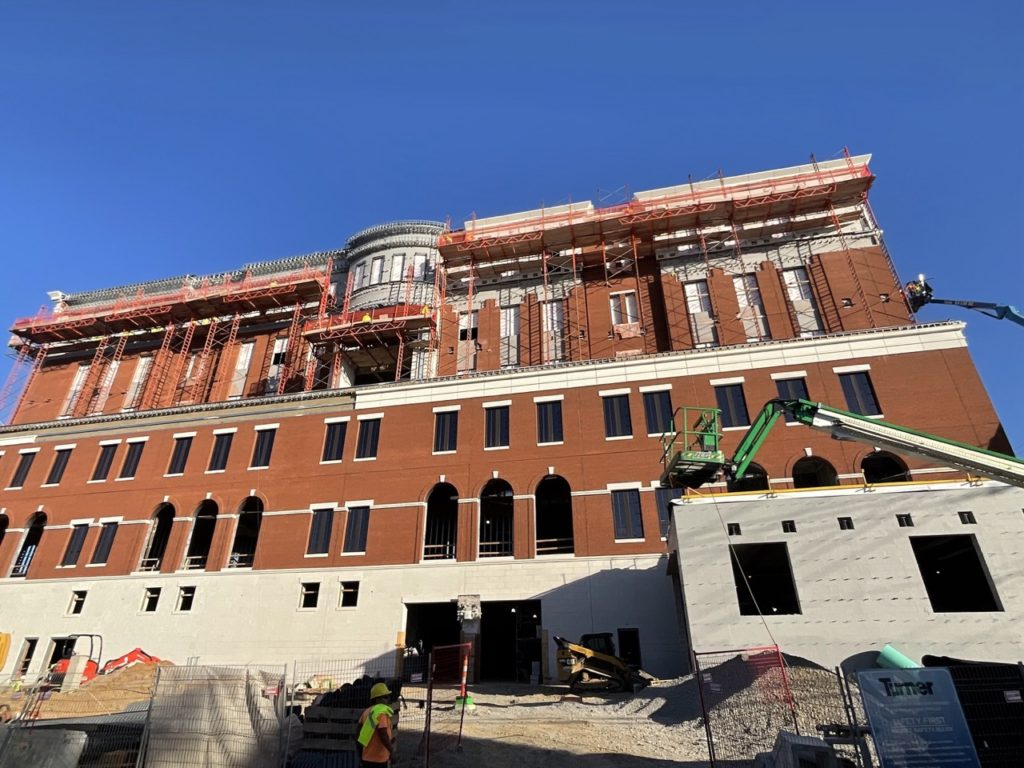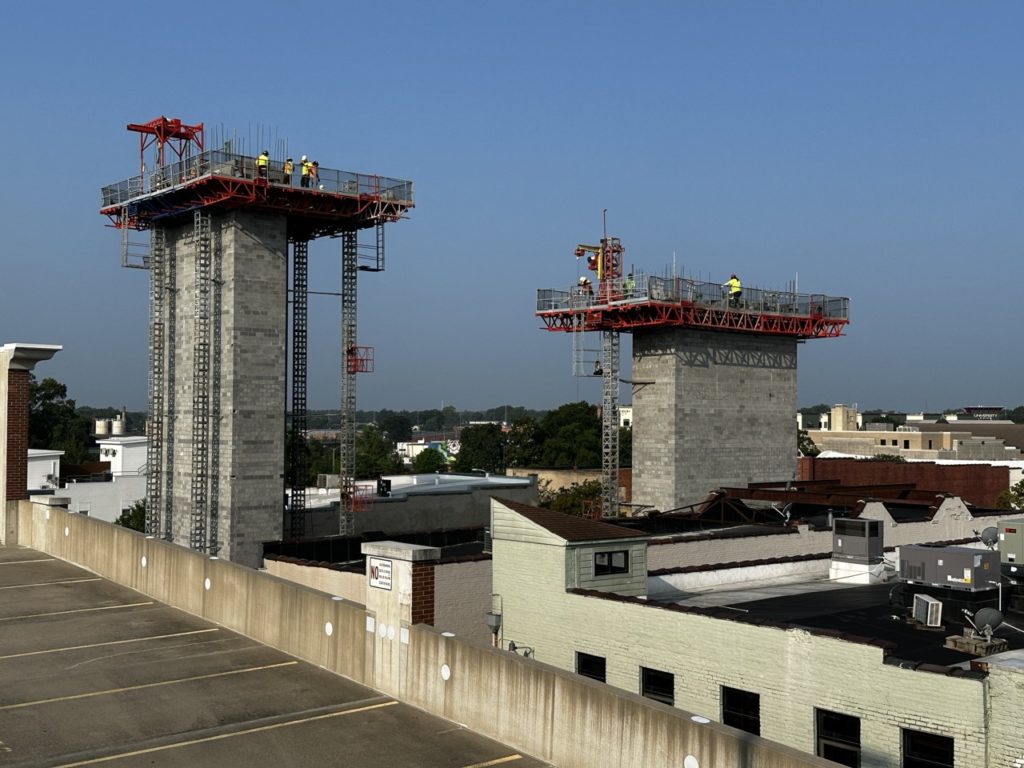Words: Clint Bridges
Photos: EZ Scaffold
I am rehashing an article I wrote ten years ago because the issues have not gone away, and there is no relief on the horizon. “Is the rest of the country busy?” As I travel around and visit with contractors, this seems to be a prevailing question. Depending on where you are, it may be asked differently, but this is a popular question along with what parts of the country are the busiest, and do you know anyone looking for a job?
While it’s easier to tell you what areas of the country aren’t busy than the ones that are, it is almost impossible to find someone who needs a job; it seems the biggest problem most contractors have these days is how to get all the work done they have to do and where are they going to get the people to do it? While it is a good problem to have, it is still a problem. According to a statistic I read recently, there are over 459,000 construction job openings, which is 110,000 more than this time last year. With the average household now at 1.7 children compared to 3.7 children 64 years ago, this problem is not going away. We need immediate solutions to a long-term problem, a good problem, but a problem nonetheless. How are we going to get all of the work done when we don’t have enough employees to do it with? Mast climbers can be an easy and profitable solution.
SAFELY DO MORE WITH LESS
It is more important now than ever to be as efficient and productive as possible. One of the most expensive costs of a job is not having enough scaffold and/or not having the right scaffold. As one of my customers told me, “Get him on the wall and get a brick in his hand .”If the employee has nowhere to work because there is not enough scaffold or the scaffold is not ready, they are not being productive. Mast climbers can dramatically save labor and increase production. Do more with less.

The purpose of a mast climber is to position personnel at their most productive and safe working level. An often quoted (at least by elevating platform salesmen!) MASONRY Magazine article written by Bruce A. Suprenant references an independent study by the University of Texas, funded by the U.S. Department of Housing and Urban Development (HUD), that shows using adjustable scaffolding rather than conventional tubular scaffolds increased productivity by more than 20%. He goes on to illustrate how just a 10% increase in production can double your profit or, these days, much more. It makes perfect sense. You are more productive when you are comfortable, especially when you are not bent over or reaching over your head.
Mast Climbers are also faster to assemble, twice the work with half the people. Fewer parts and pieces, built-in guardrails, fewer scaffold planks, fewer wall ties, and raising the platform automatically to add masts are all features that speed up the assembly process. Two to three people should be able to set up 64 linear feet X 40 feet high in 60-90 minutes. Three people can set up a machine 64 linear feet X 150 feet high in a day.
NOT JUST FOR STRAIGHT AND TALL JOBS
Because of the speed of assembly, mast climbers are showing up on shorter jobs. From fast food restaurants to convenience gas stations to residential houses, the ability for two guys and one mast climber to do the work of four or five guys and a truckload of scaffold makes it a viable choice for these types of buildings. A customer of mine sent me a text last month with pictures of a job where he set up an EZ Mast Climber and was not even raising them. He said he could set up EZ Mast Climbers faster than he could with one frame of scaffold plus fewer boards.
Most of the assembly is done on the ground and/or in a fall-protected environment. Many mast climbers can free-stand 35’-40’ high, which is a safer option. When a scaffold is 100’ in the air, safety is a priority. When the scaffold is not as high, we are lucky for the boards to be in place, much less adequate foundation, fall protection, safe access, and plumb towers. I remember seeing a study (but had no luck finding it) that the likelihood of survival after 26’ is the same. A study by the NIOSH FACE (Fatality Assessment and Control Evaluation) program shows that in a 15-year period, there were just as many fatal falls from below 28’ as above it. The same precautions should be taken no matter what the height. Mast climbers, by their nature, provide a safer work platform for shorter jobs where they may not have been considered before. Mast climbers provide peace of mind with built-in safety features and, on shorter jobs, do not have to worry about bracing masts off to walls.
Another misperception of mast climbers is that they only work on straight walls. The ability for mast climbers to fit “cut-up” walls has advanced tremendously over the last 20 years. Many manufacturers can cantilever up to 20’ forward and back as well as rotate for radius walls. There are twin mast platforms that allow for multiple configurations and cantilevers. Some single mast platforms can roll through 3-0 doors and be set up by hand in tight areas such as stairwells and shafts. With the use of EZ Scaffold’s Pit Leveler, the EZ Compact Mast Climber can not only be set up by hand but can span elevator pits without the use of a forklift or crane.
Most of these options are standard equipment, which makes it safer. The platforms are engineered with specified capacities and designed guard rail systems. There is no need to “rig” something up.

FORGOTTEN BUT NOT GONE
While automated mast climbers have been around since the early 1970s, a manual mast climber of sorts that has been around in one form or another since the late 1940s is still providing a safe and productive platform for many jobs, especially masonry. A crank-up scaffold is not thought of as a traditional mast climber. Yes, I know that it has a different ANSI standard, and I am not campaigning for that to change. However, it is a work platform that is raised and lowered on a mast. People ask all the time, “Do y’all still sell crank up?” We do, and as much as ever. If you have not been thinking about using crank up or adding it to your product line, you should. Crank-up is an affordable way to dramatically increase production. At about half the price for the same square footage, crank-up is a good every-man’s mast climber. Going back to that contractor who told me, “Get him on the wall and get a brick in his hand,” crank-up keeps personnel at their most productive level. When they turn around, their stock is right where it needs to be, comfortable and easily accessible. No more working at your feet and over your head.
Mast climbers are more flexible than ever, but crank-up gives you the ability to put an elevating platform in areas where mast climbers are not accessible. The use of cross-bracing allows for adjustable widths and working around obstructions like stairs, pipes, and ductwork. Fixed metal decks on mast climbers are a great feature, increasing safety and reducing the need for wood planks, but they can be restrictive. Being able to adjust the platform size using cross braces and scaffold plank with crank-up scaffold gives the capability of an adjustable platform in areas where a mast climber may not be feasible. Just like mast climbers, crank-up scaffolds have brackets designed to adjust the platform safely without having to “rig” something up. Built-in pilaster brackets and adjustable corner brackets allow the platform to safely “expand” to the wall.
When we first started to design a mast climber for manufacture, I thought we were spending a lot of money to push a button; I was ignorant. They are now my scaffold of choice. Mast climbers are efficient, productive, labor-saving, and money-making machines, as well as easier and safer. Anyone who tries to tell you differently doesn’t sell them or hasn’t used them. While mast climbers are not for every job or every situation, they should be strongly considered to increase efficiency. Do more with the people you have, especially in times when labor is at a premium.
